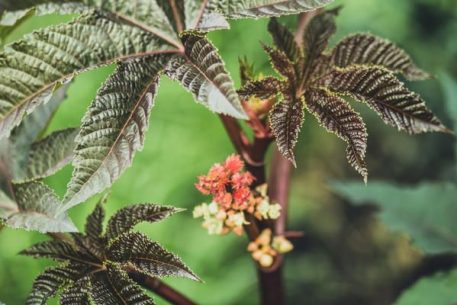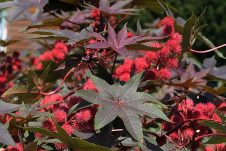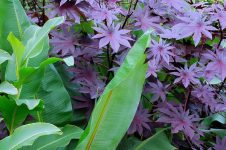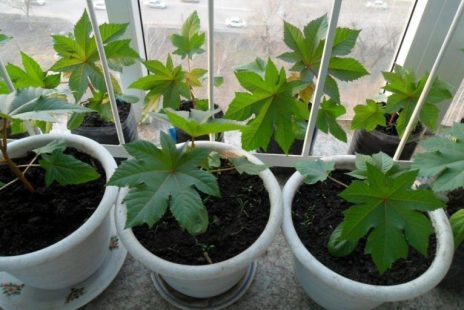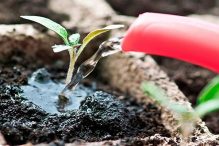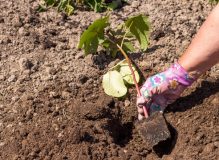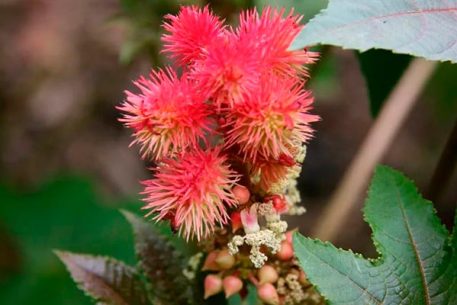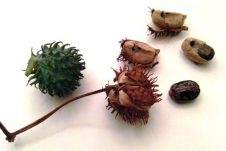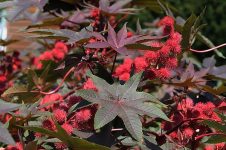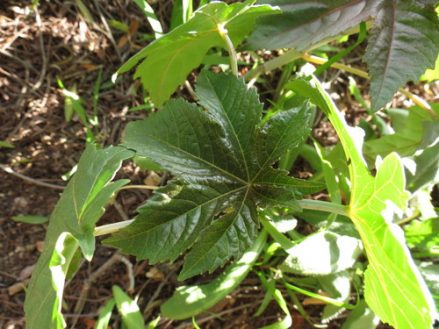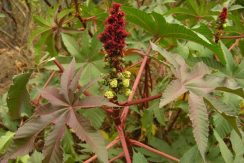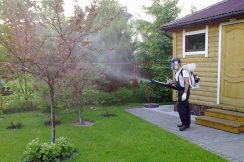Castor oil plant is an annual plant for the garden. Tall bush with large palm-shaped leaves. This unusual plant will become a distinctive emphasis on a green lawn or the center of a flower bed next to low bushes.
Material Content:
Description of a garden plant
A tall bush with a spreading crown of large leaves is painted in bright green or reddish tone. Its stems surprise with the play of shades, which depend on the time of growth and development. The culture grows very quickly, growing during the summer season to two meters and above.
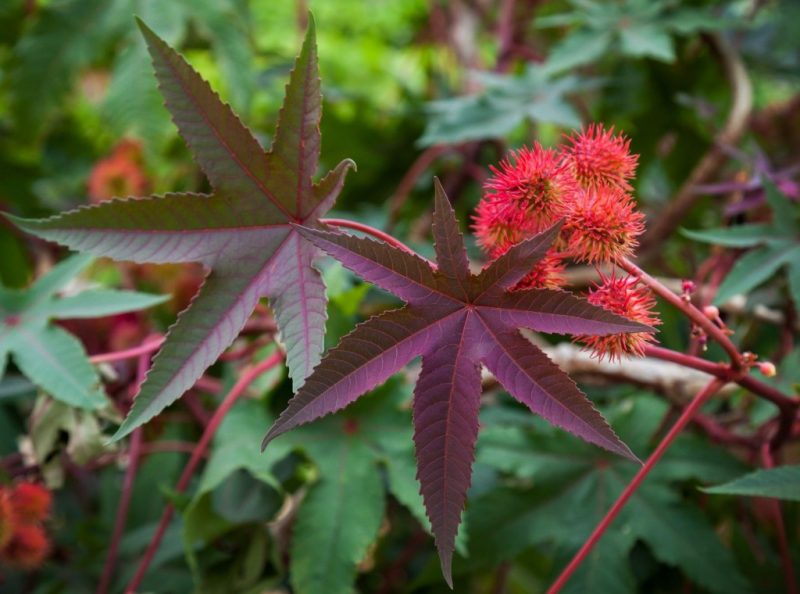
Bloody red flowers collected in a brush. The fruits are hidden in spiky bright red balls. They serve as an original decoration of culture. Seeds resemble a tick, which is why the plant is called.
Seeds serve as raw materials for castor oil, which refers to medicines. Leaves also have medicinal properties; various tinctures are made from them.
It is important to remember that castor oil seeds are poisonous, they contain ricin poison. Do not plant it in your area if there are small children nearby, and do not touch them yourself.
Common types and varieties
The castor oil plant has many varieties that differ in appearance, flowering time and other characteristics.
The most famous types are:
- Variety Cossack. Has brilliant red-brown shoots, red threadlike strips are visible on green leaves. In young plants, purple-red leaves serve as decoration. Flowers are red with purple seed bolls. A popular view among gardeners.
- Grade Serenade. Stems and leaves are distinguished by a waxy coating. Blooms with purple tassels of flowers.Keeps decorative until the first frosts.
- Mid-early view of Volzhsky. Its feature is purple stems. Very effective plant. It requires careful care after planting, in the future has immunity against many diseases.
- Castor bean Crystal 66 is considered an early ripe variety. Grown for technical processing. Ripe seeds are a source for castor oil.
- Gibson decorative castor bean is grown to decorate flower beds. Red or red-violet leaves are cast with a metallic sheen.
- Castor oil plant Zanzibar. Fast-growing, reaches a height of 2 m. It has large inflorescences and leaves of red-violet color.
- The decorative appearance of the Cambodian castor bean is low, only 1.2 m. it is characterized by very dark leaves and a black trunk.
Planting castor in open ground
Castor oil plant ordinary heat-loving African plant. In the subtropics it grows as a perennial. In Central and Eastern Europe, it does not tolerate cold winters; it dries by autumn. Here it is cultivated as an annual.
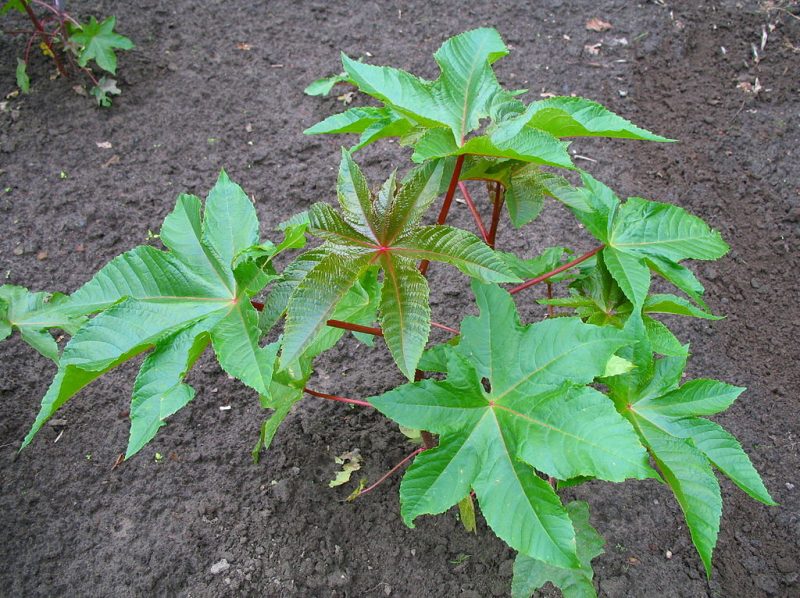
Castor bean seeds in open ground begin to be planted in late May. Culture does not like transplantation, so it is planted immediately in the chosen place. They dig holes in the soil, lay 2-3 seeds in each. They fill up with soil and watered.
In warm weather, seedlings appear quickly. To protect against possible cold weather, planting is covered. One plant is left in each well, the rest are cut with a knife at the root and removed.
Agrotechnics of cultivation and care
The most convenient way to grow castor oil plants through seedlings. Seeds begin to be planted in the spring, approximately in March or April. It is difficult to break through the dense shell, so the seed should be rubbed to thin its shell. At night they are placed in a solution of Epin or potassium permanganate. Each seed is planted in a separate bowl.
Tanks are placed in a sunny place, covered with a film. This creates a mini greenhouse. Shoots may appear in a few days. When they appear, the film is removed. When the cotyledonous leaves appear, carefully remove the sticky peel from them, after moistening it with water.
Further care consists in watering seedlings and carefully loosening the soil. When the seedlings have several leaves, and it reaches a height of 10 cm, the time comes for its transplantation to a permanent place. They do this not earlier than the beginning of June. With an earlier transplant into the open ground, the culture is sheltered.
Outdoor Care
The main attention should be paid to watering the plant. In a month it reaches one and a half meters of height and continues to grow further. It must be watered every week with 10 liters of water under the bush. When flowers appear, watering is done more abundantly.
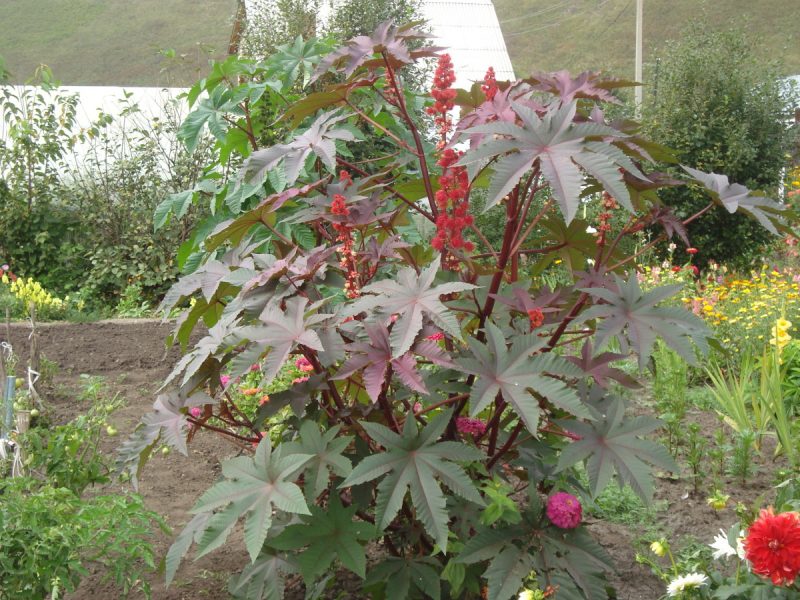
Young plantings should be freed from weeds, an adult plant itself can cope with them. Do not forget about loosening the soil, removing a dense crust and saturating the earth with oxygen.
A tall plant requires nutrition for its development. These are mainly fertilizers containing nitrogen. A good source of nitrogen is chicken droppings or manure. Infusions are made of them, in fresh form they will burn the roots of the plant. In the formation of flowers, the bush requires mineral fertilizers containing phosphorus and potassium. You can use an infusion of ash.
Read also:buldenezh bush: care
Sometimes a tall spreading plant needs support. To do this, you can use one column driven into the ground next to the plant, you can create a low fence, placing it around the bush.
Castor oil plant after flowering
With good care, castor oil will bloom to frost. After flowering, seeds begin to form and ripen. They are collected in seed boxes that look like spiny balls. Their full ripening ends by September. Seed boxes are cut and placed for drying in a dry ventilated area.
Seeds dry for 2-3 months.In November, they are removed from the shell by slightly pressing on it. From each box several seeds appear in the form of beans. Seeds are the most toxic part of castor oil plants. When removing them, gloves must be used. Keep out of reach. Seed germination lasts up to five years.
Breeding methods
Like an annual plant, castor oil plants breed with the help of seeds. Apply the seedling method, growing seedlings in greenhouses or indoors, or plant castor beans directly on the bed.

Both methods give positive results. Growing through seedlings is suitable in cold areas. In this case, you can get earlier seedlings, rapid development of the plant and abundant continuous flowering. Only in grown seedlings will the plant produce seeds that can fully mature and will be suitable for further planting.
Disease and Pest Prevention
Castor oil plant is hardy and not often sick. Sometimes this happens, and measures should be taken to prevent them. Among the diseases, castor bean threatening: gray and black rot, powdery mildew, late blight.
The flower is sprayed for prevention and treatment with a 1% Bordeaux mixture. Of modern drugs, fitosporin, home. Sick leaves and shoots are removed and burned.
In castor oil, all parts are poisonous, so pests are not afraid of him.
To decorate the site with an unusual flower, you need to make some efforts. An annual plant needs to be grown every year. To fiddle with seedlings, transplant it into the ground, care for and protect from the cold. But such beauty will justify the chores. You will enjoy contemplating the results of your labor.


